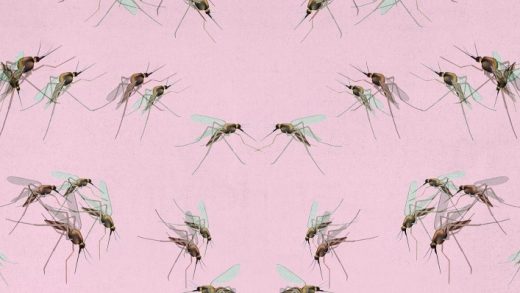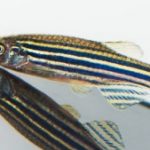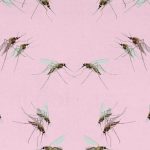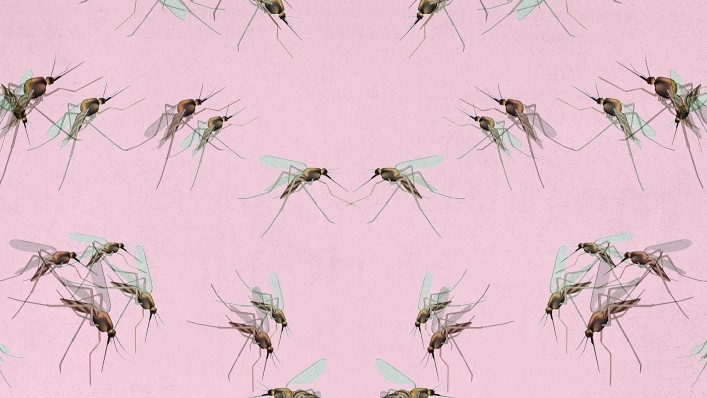Why This Van In Fresno Is Releasing A Million Bacteria-Infected Mosquitoes Every Week
Zika-carrying mosquitoes haven’t shown up in California yet. But Aedes aegypti–an aggressive, non-native species of mosquito that is known to carry the Zika virus, along with dengue, chikungunya, yellow fever, and other diseases–arrived in Fresno County in 2013. Traditional methods of mosquito control, such as insecticide spraying programs, don’t work well against the species, which tends to breed in small, hard-to-reach sources of water like dishes under flowerpots. Insecticides can also kill bees and other beneficial insects.
So the city’s mosquito control agency–along with a startup called MosquitoMate, and Verily, the Alphabet subsidiary formerly known as Google Life Sciences–is now testing a new approach called Debug Fresno. Each week, until December, the team will release 1 million sterile male mosquitoes in two Fresno neighborhoods. When the mosquitoes mate with wild females, the resulting eggs won’t hatch. Females mate only once. (Male mosquitoes don’t bite, so the influx of millions of them shouldn’t annoy humans). In theory, the technique could dramatically reduce or eliminate the Aedes aegypti population before the mosquitoes become infected with a disease like Zika and start spreading it.
“By the end of the study, we hope to not be able to detect Aedes aegypti in the two neighborhoods we targeted,” says Jacob Crawford, a scientist at Verily, noting that it may be necessary to “spot treat” again at the beginning of the next mosquito season to account for eggs left at the end of this season.
The fundamental technique is not new, though advances in technology–including Verily’s use of computer vision–may make it financially viable now. It relies on Wolbachia, a bacteria that naturally occurs in many insects, but not Aedes aegypti. If a male mosquito is infected with the bacteria and mates with an uninfected female, they can’t produce offspring (Wolbachia also reduces the chance of a female mosquito passing on diseases when it bites). There’s a catch: If both the male and female have Wolbachia, their eggs will hatch normally, so the method only works if it’s possible to ensure that the only infected mosquitoes that are released are male.

A German researcher first tested the use of Wolbachia-infected mosquitoes in Burma in 1967, carefully breeding the mosquitoes and hand-sorting out the males before releasing them. Twelve weeks later, the local mosquito population was gone. A similar technique was used in the Americas to eradicate the screwworm fly, a fly that lays eggs in animal wounds, hatching maggots that eat through flesh and can kill livestock and even humans. “Using this sterile insect technique, where you release a lot of these sterile males, they’ve eradicated this insect on a continental scale,” says Stephen Dobson, an entomologist at the University of Kentucky and founder of MosquitoMate.
Raising mosquitoes and sorting them by sex is labor-intensive, and that makes it expensive. But Dobson, who patented a way to infect mosquitoes with Wolbachia in 2005, was able to begin working with Verily, which has automated ways to mass breed and sort mosquitoes. Verily is using MosquitoMate’s strain of Wolbachia-infected mosquitoes in the study. The system produces more than 100,000 male mosquitoes each day. Though Verily won’t go into detail about how the full system works, Crawford will say that “our sex-sorting technology uses computer vision to detect female mosquitoes, which are then removed, leaving us with a very low risk of female contamination.”
Because Aedes aegypti isn’t native to California, eradicating it–or the Asian tiger mosquito, another invasive species–shouldn’t affect local ecosystems. “The tiger mosquito invaded the U.S. in 1985,” says Dobson. “So we’re going back to pre-1985, and the bats and the birds were doing just fine prior to that.” He notes that for species that eat mosquitoes, the insects are a very small part of their diet.
Still, some researchers are concerned that the strains of Wolbachia used in the mosquitoes could possibly jump to other insect species. “If it got transferred to a pollinator species, we can have population size reduction and associated pollination problems in many of our crops,” says Gabriel da Luz Wallau, a public health researcher in the entomology department at the Aggeu Magalhães Research Center in Brazil. Wallau says that such transfers are frequent in nature; Dobson, however, says that his team has created experiments to try to make Wolbachia transfer between species, and it has never happened. Other mosquitoes and insects also naturally have the bacteria, so if transfer is a risk, it already exists.
The method isn’t the only way to kill mosquitoes without insecticides. Others are using mosquitoes that are genetically modified to be sterile, something that could potentially work as well or better–but that is less likely to get public support.

“Many people are (incorrectly, I feel) not comfortable with GMOs,” John Beckmann, a postdoctoral researcher in Yale’s Department of Molecular Biophysics and Biochemistry who studies Wolbachia, says in an email. “Thus the advantage of Wolbachia is a nuanced semantic advantage in that they are not genetically modified. This means the people you can imagine–I won’t judge–are typically less concerned with this type of insect release as opposed to one that involves GMOs, which comes with all the political baggage that that charged term carries.”
Others are using Wolbachia in a different way; Eliminate Dengue, a nonprofit in Australia, releases both male and female mosquitoes infected with the bacteria. Because both are infected, they can successfully breed. But once the infected mosquitoes are released, they pass the bacteria to future generations, permanently reducing the risk of disease transmission because of Wolbachia‘s disease-blocking power.
“The approach we’re taking, you do it once, and then once you do it you don’t need to reapply it,” says Scott O’Neill, who leads Eliminate Dengue and is the director of the Institute of Vector-Borne Disease at Monash University. “That makes it very cost effective and very cheap and very suitable for developing countries. But it makes a lousy business model because you don’t have anything to sell once you do it once. We’re a not for-profit, in the business of trying to alleviate disease in developing countries, so we’re looking for the cheapest and most effective way to do that in a sustainable way for those countries.”
Dobson says there are advantages and disadvantages to each approach; Eliminate Dengue’s approach, for example, could initially increase mosquito bites, because it releases females along with non-biting males. But it does work with one application because the bacteria can spread to successive generations, and the organization has already tested it at a large scale, having released mosquitoes across entire cities in Australia (a full randomized trial will be complete in two years, but so far, the team’s observational data suggests that the method eventually completely disrupts the transmission of disease).
“I think we should be exploring multiple alternatives because we need new tools,” Dobson says. “Existing chemical pesticides, we’re having problems with resistance, we’re having to spray more and more, and even then, the mosquitoes are just not dying. They’re resistant to some of these chemicals.”
Ultimately, MosquitoMate and Verily aim to create a system that will be affordable enough to use in developing countries, like Eliminate Dengue’s system.
“There are new pathogens that we’re learning about that are being established in the U.S. every year,” says Dobson. “But if you compare that to the challenges being faced in other countries, there are much more daunting problems overseas. That’s absolutely where we want to go with this technology: Can it be used to help those who are most in need? For that to work, it’s going to need to be an affordable solution.”
The vast majority of cases of yellow fever, for example, take place in sub-Saharan Africa. Dengue fever, which can develop into a fatal illness, is a leading cause of death for children in some less-developed countries in South America and Asia. Though Aedes aegypti doesn’t carry malaria–a disease that kills hundreds of thousands of people in Africa each year–other researchers are studying how Wolbachia could be used in mosquitoes that do. Verily’s automation system could potentially be used to mass-produce and release those mosquitoes as well.
“Right now we are optimizing our program for speed so we can demonstrate that our technology can work,” says Crawford. “We are mindful of adjustments we can make to future designs to make it financially viable for different environments around the globe where diseases like dengue or Zika are endemic.”
The team will also have to show that it’s effective in reducing or eradicating disease-carrying mosquitoes–something that the current trial in Fresno could prove. It will also show how long it takes for the mosquito population to crash. “It’s not until you do these large real-world trials that you can actually see how it works in the field,” says Dobson.
Verily (Alphabet’s life sciences division) is using robots and AI to mass-breed sterile mosquitoes and set them free to eliminate the wild population.
Zika-carrying mosquitoes haven’t shown up in California yet. But Aedes aegypti–an aggressive, non-native species of mosquito that is known to carry the Zika virus, along with dengue, chikungunya, yellow fever, and other diseases–arrived in Fresno County in 2013. Traditional methods of mosquito control, such as insecticide spraying programs, don’t work well against the species, which tends to breed in small, hard-to-reach sources of water like dishes under flowerpots. Insecticides can also kill bees and other beneficial insects.
Fast Company , Read Full Story
(27)














